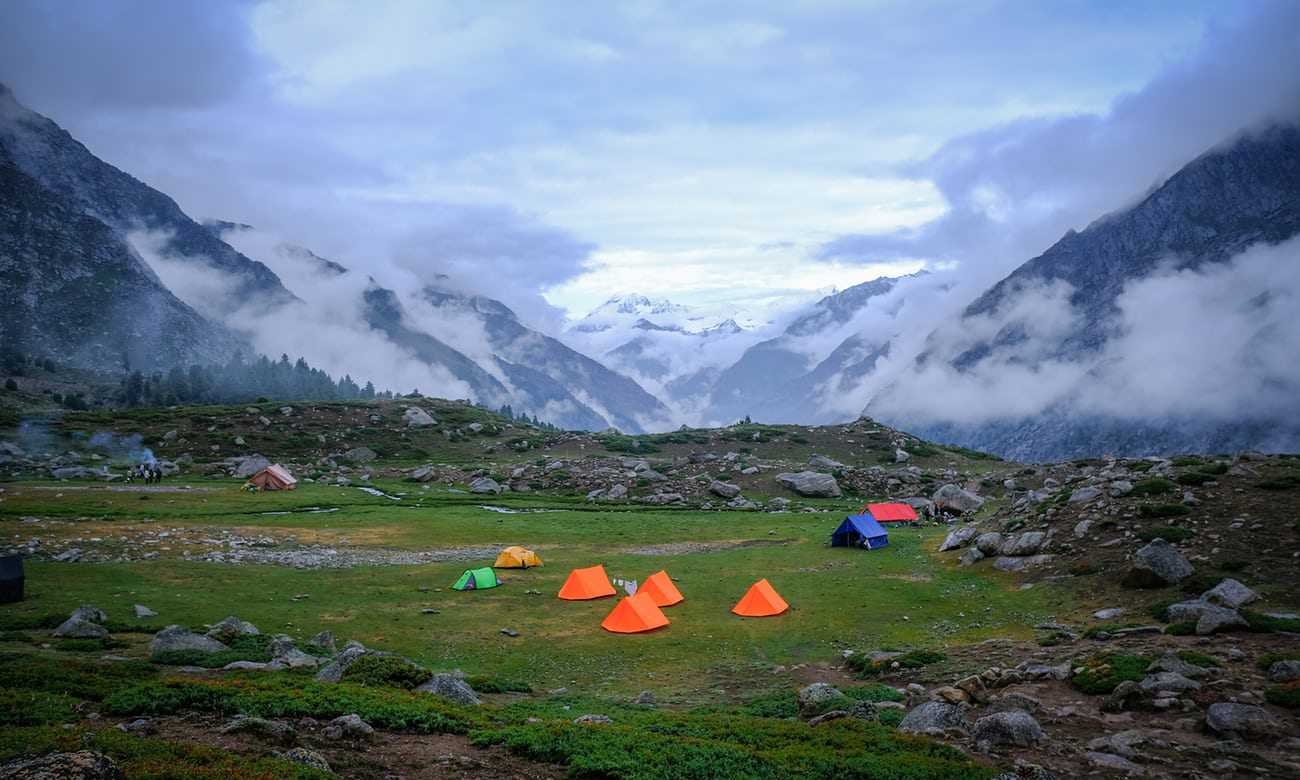My Himalayan journey – trekking to Shangri-La
20 August, 2018

At the top of the Miyar Valley in the high Himalayas, a chain of seven tiny turquoise pools nestle below the snout of a formidable glacier. Each one looks deceptively inviting. We plunge in and our shouts, as we brave the icy water, echo off walls of rock into empty air; there is no one but our group around to hear. For miles in every direction there are only mountains; their white peaks, sheer slopes and pockets of high hidden valleys are filled with wild flowers for just a few months of the year, mainly June and July, when their cape of snow melts away.
Most stunning are the fragile, brilliant blue Himalayan poppies, which inspire such devotion that there is a book, Blue Heaven, dedicated to them. Some are scattered among the rocks around the pools, above the grassy meadows which feel like our own private heaven. We rest here for a day to acclimatise before heading up on to and across the glacier, playing cricket at nearly 4,000m and reading in the sunshine. Mobile phone reception had petered out beyond the last village several days earlier, so even the most anxious have gradually settled into the rhythm of unconnected days, blissfully cut off from the rest of the world.
In the week after leaving the highest village in the long Miyar Valley, we see yaks and horses roaming half-wild, and marshy lakes filled with migrating birds, a joyful patchwork of red, pink, white, yellow and blue flowers,but fewer than a dozen other people. Most are nomad shepherds who spend the summer guiding their flocks to seasonal grazing grounds along ancient paths invisible to the uninitiated, dotted with tiny stone huts that provide shelter from the elements.
In 1933 the British author James Hilton coined the term Shangri-La to describe a secluded Buddhist mountain utopia. The word, and the dream it represented, escaped the pages of his novel Lost Horizon and became embedded in popular culture, idealised, constantly reinterpreted and appropriated for the name of everything from a chain of luxury hotels to the most offbeat area of the Glastonbury festival. Few of them bear much resemblance to the rural idyll Hilton describes. In the Miyar Valley though, Hilton might have recognised something like his forgotten, isolated paradise.
Police in Urgos, the last sizeable village before the wilderness unfurls towards the highest peaks, must record every visitor to the valley. There are so few that years of names and personal details are stored in a single register, each painstakingly written out longhand by the officer, rarely more than 200 each season.
